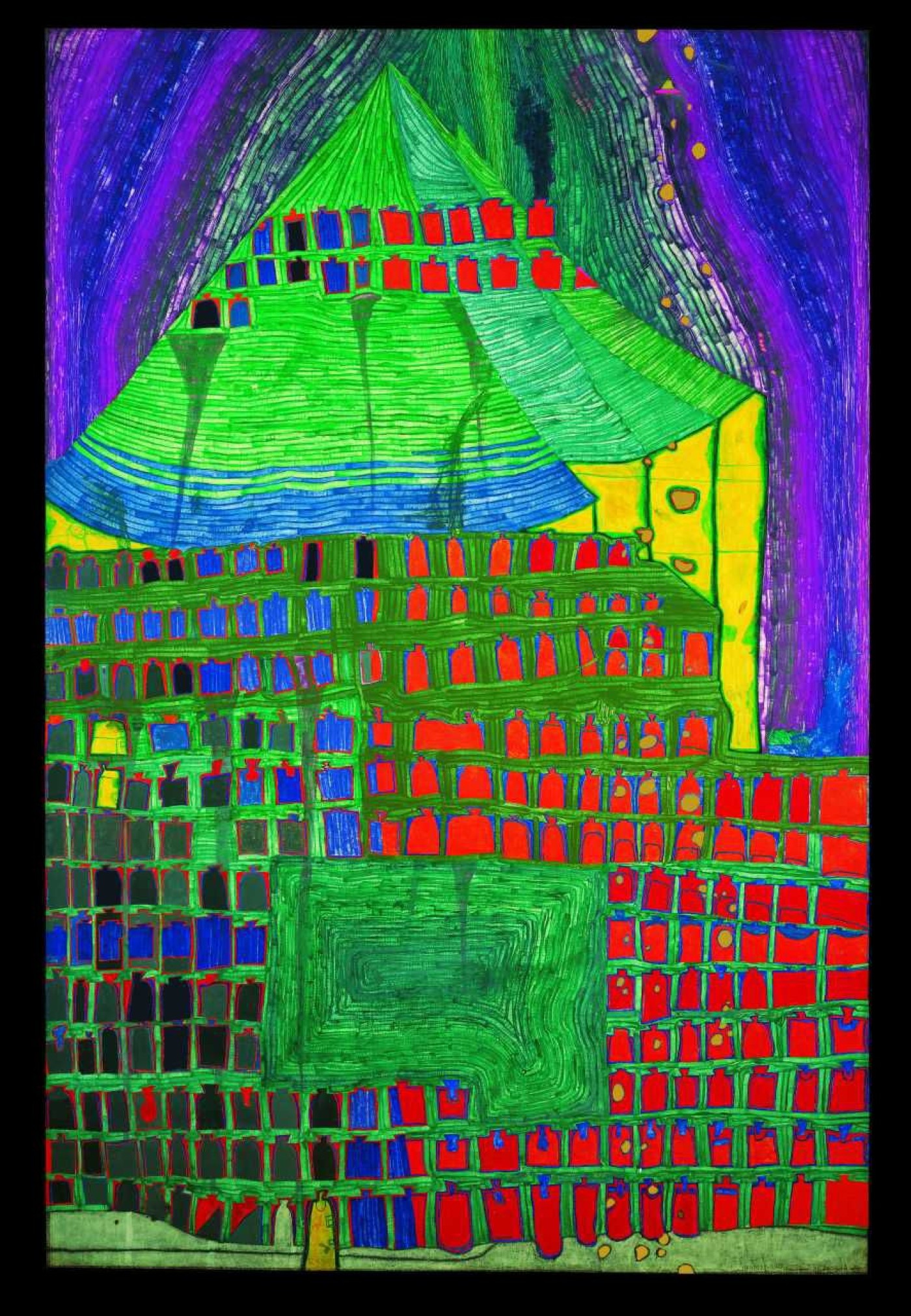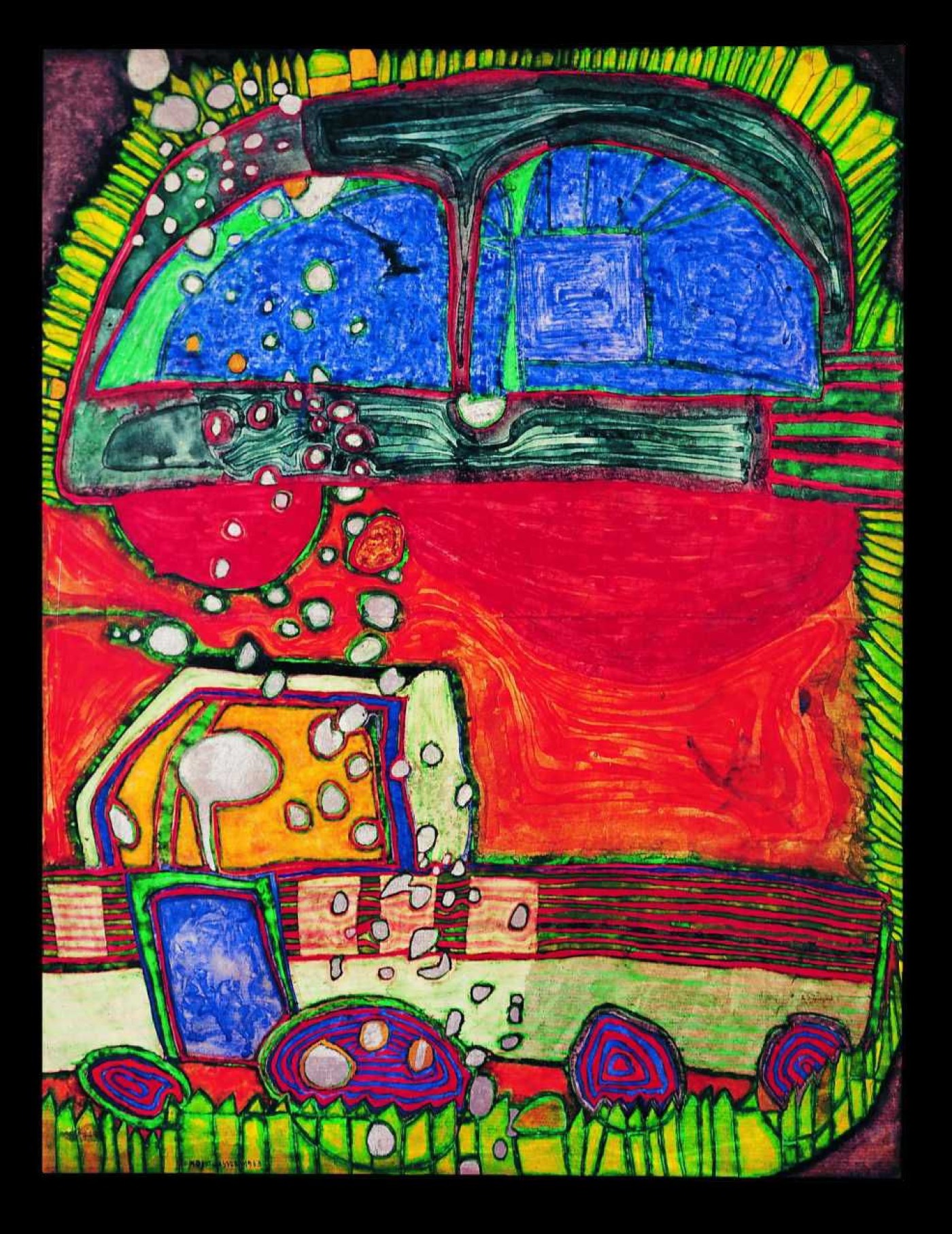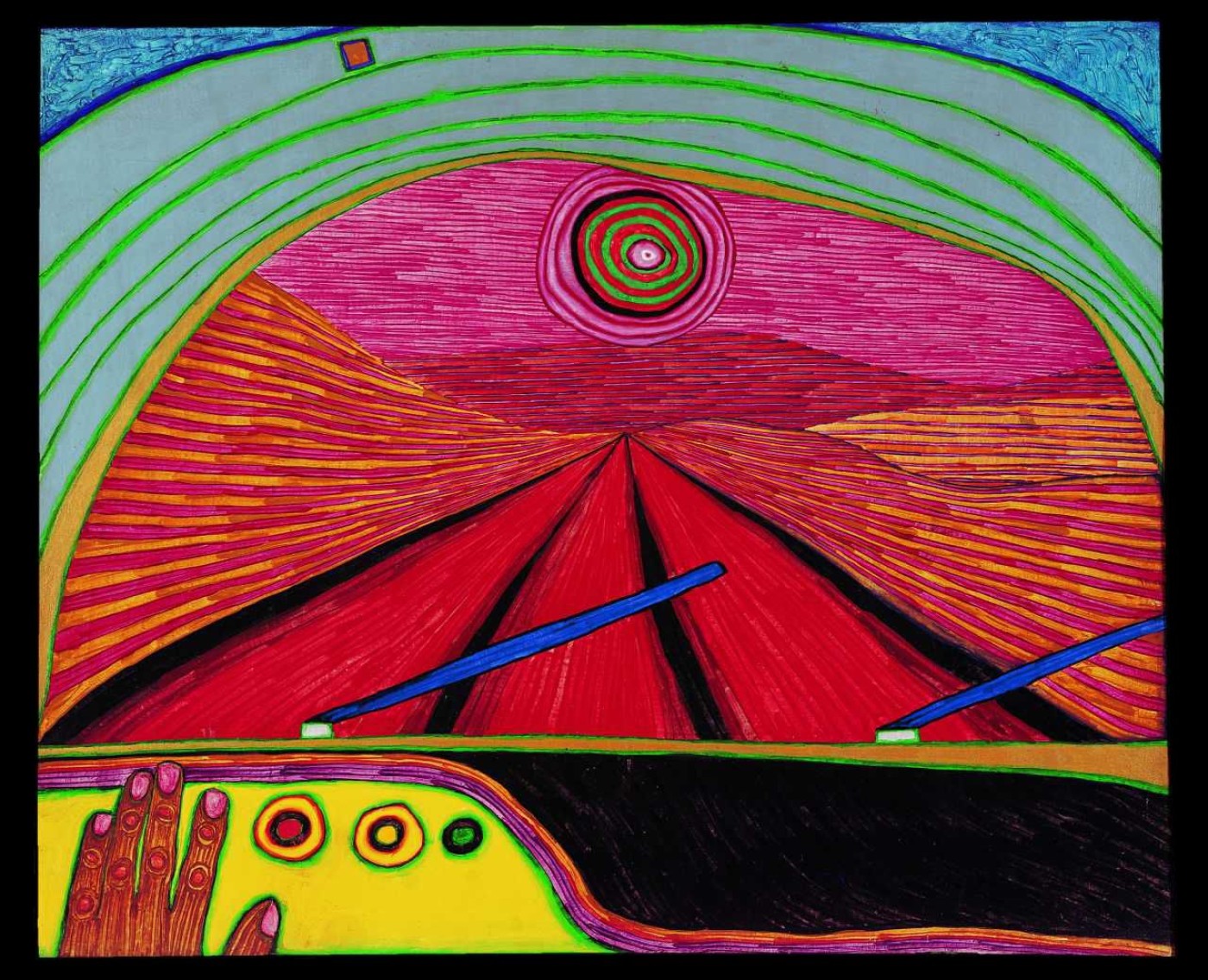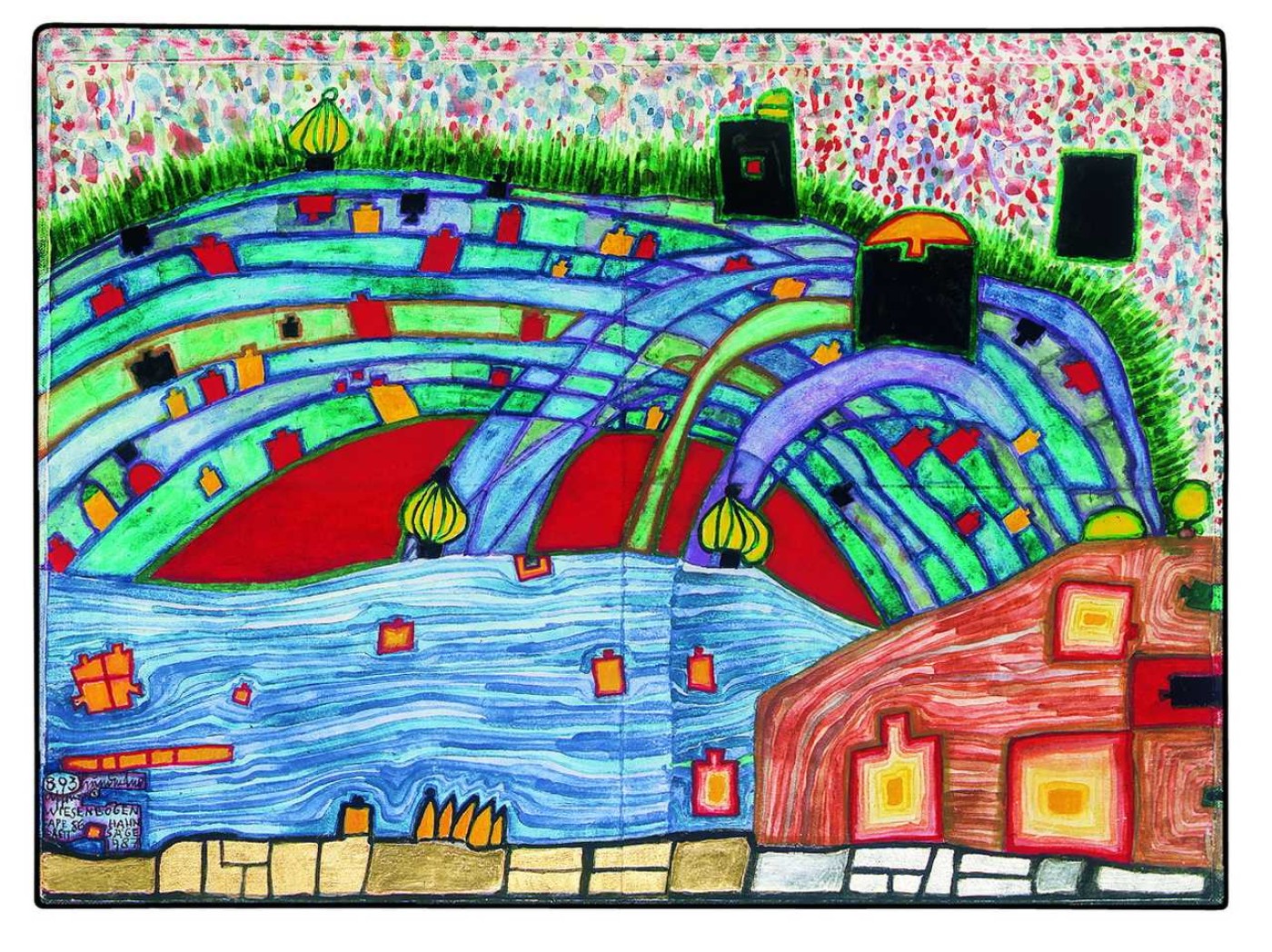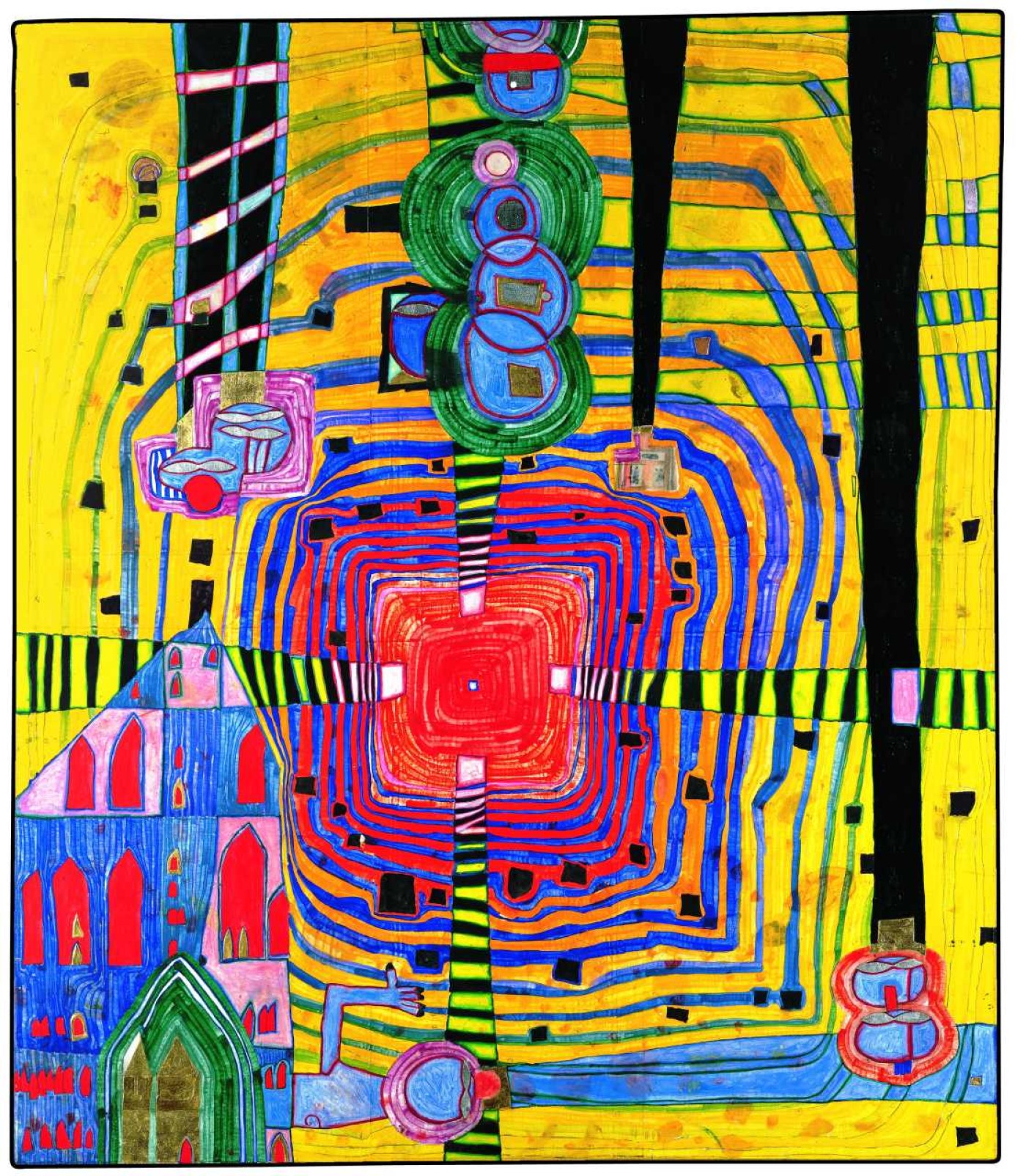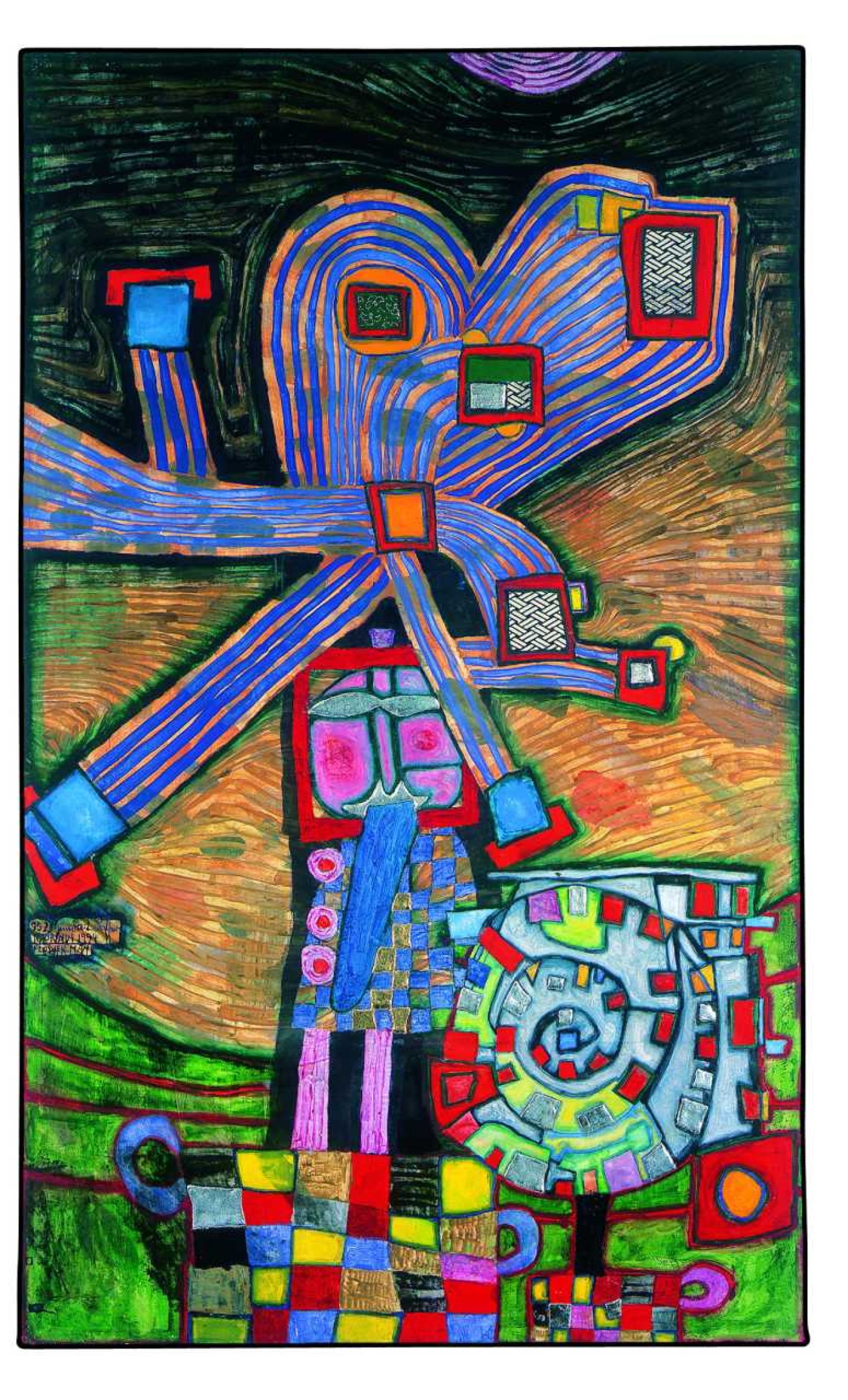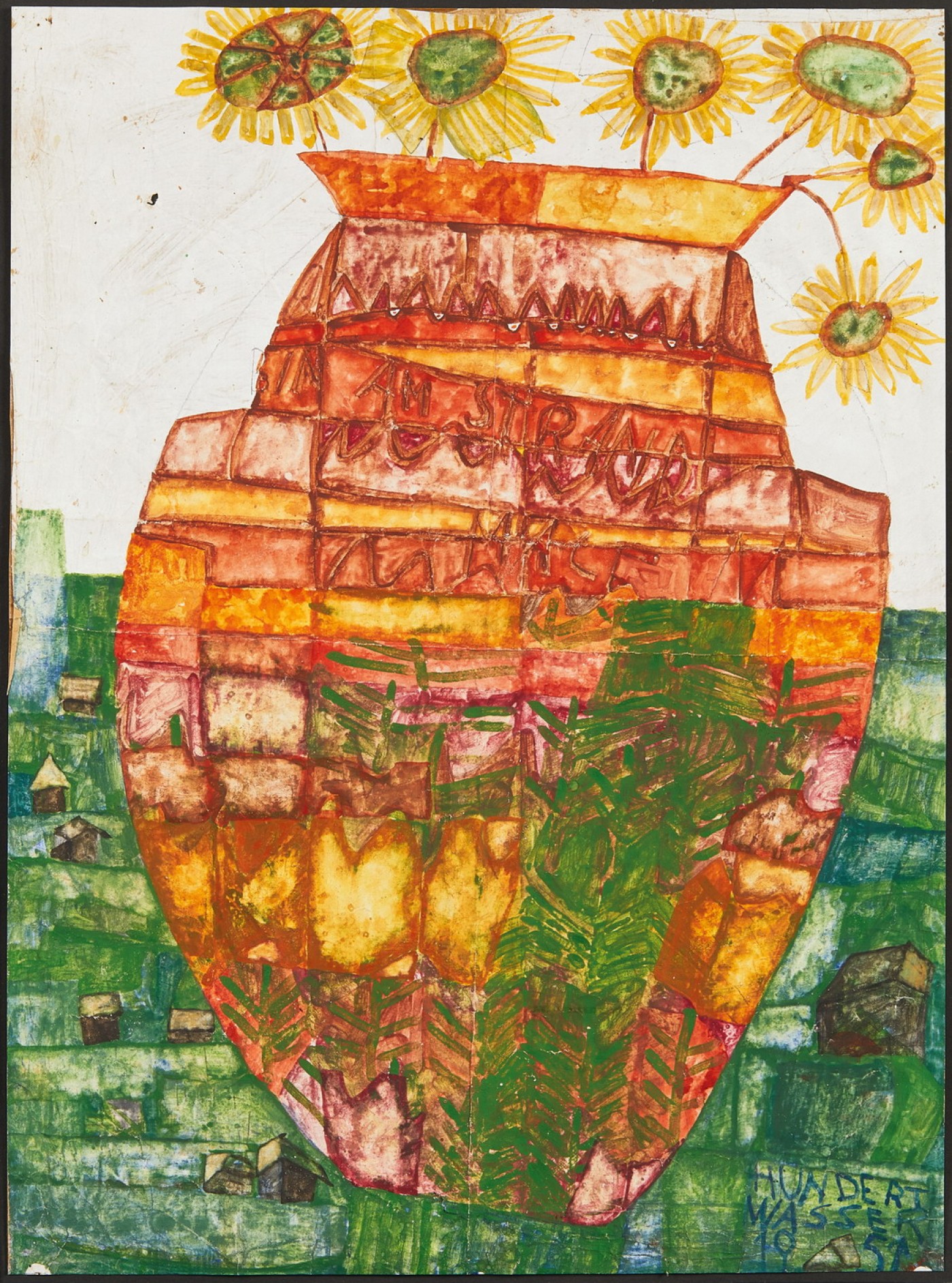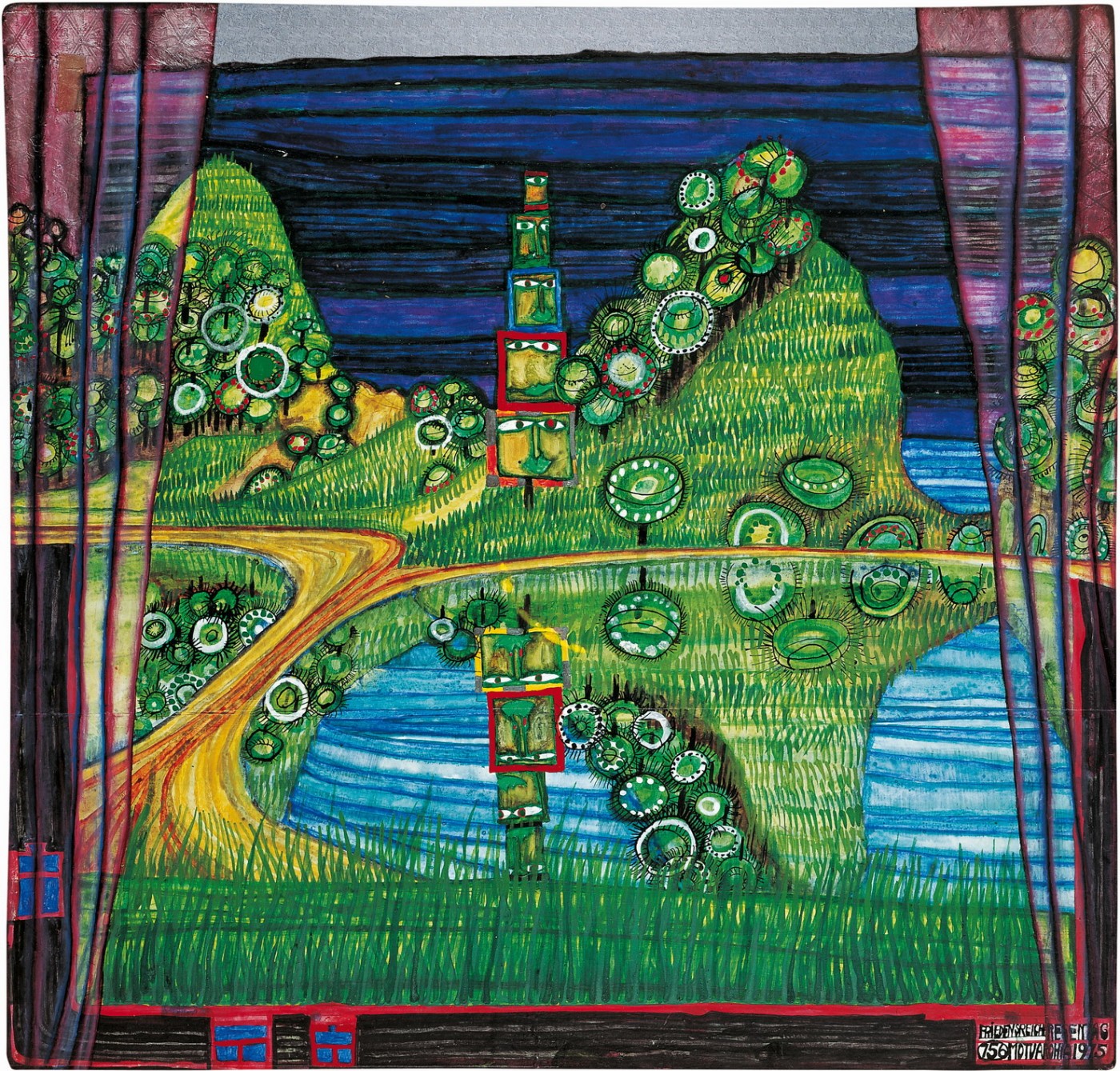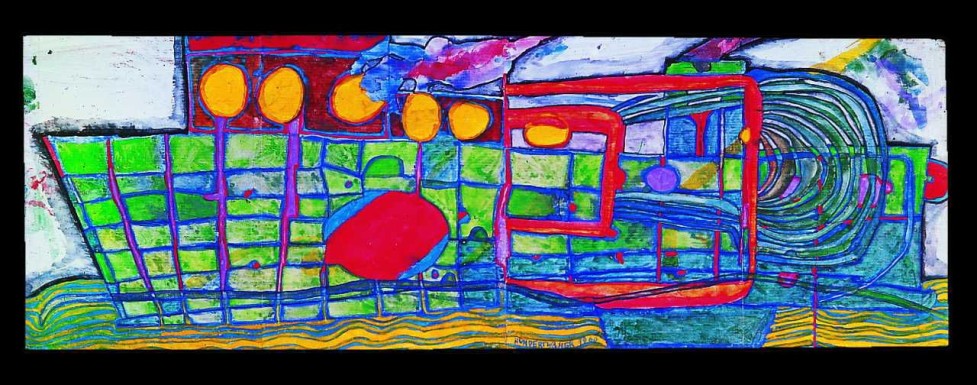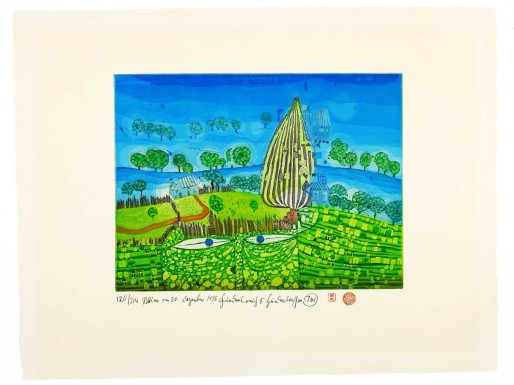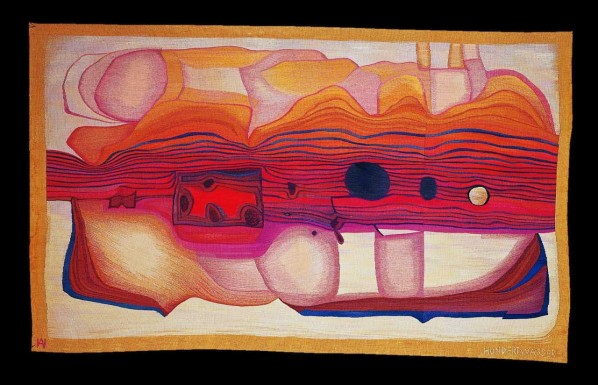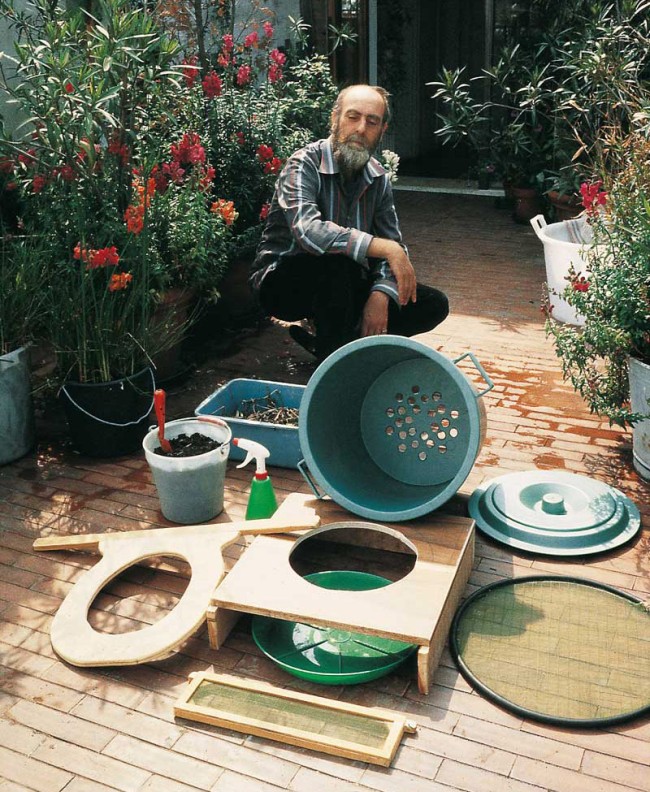THE STRAIGHT LINE LEADS TO THE DOWNFALL OF OUR CIVILISATION
Friedensreich Hundertwasser (1928–2000)
Painter, architecture doctor, ecological activist and philosopher
The work of Friedensreich Hundertwasser (born Friedrich Stowasser in Vienna) is one of the most important contributions in the art history of post-war modernism. As an important member of the international avant-garde in Paris in the 1950s, he developed his unique visual language. One of the central motifs of his colorful picture world is the spiral.
If today Hundertwasser is considered one of the most popular European artists of our time, his graphic work has made a great contribution. His goal in the art of graphics was to create variations within one edition, with the result that each sheet of an edition is unique, different in color and design from all others.
Hundertwasser's commitment to a more human architecture in harmony with nature and his visionary ecological commitment developed from his belief in the power of nature and individual creativity. Since the 1980s, he has been realizing architectural projects in which there is the window right and tree tenants, the uneven floor, forests on the roof and spontaneous vegetation. His buildings testify to his commitment to diversity instead of monotony, for romanticism, for the organic and for unregulated irregularities, for spontaneous vegetation and for living in harmony with nature.
At the center of his ecological activities were tree planting and greening campaigns, the restoration of natural cycles, the protection of water and the fight for a waste-free society.
He disseminated his socio-critical and ecological positions with manifestos, letters, speeches and public demonstrations in which he criticized the pure functionality of all areas of life, the uninhibited growth doctrine and the adaptation to social conformism.
